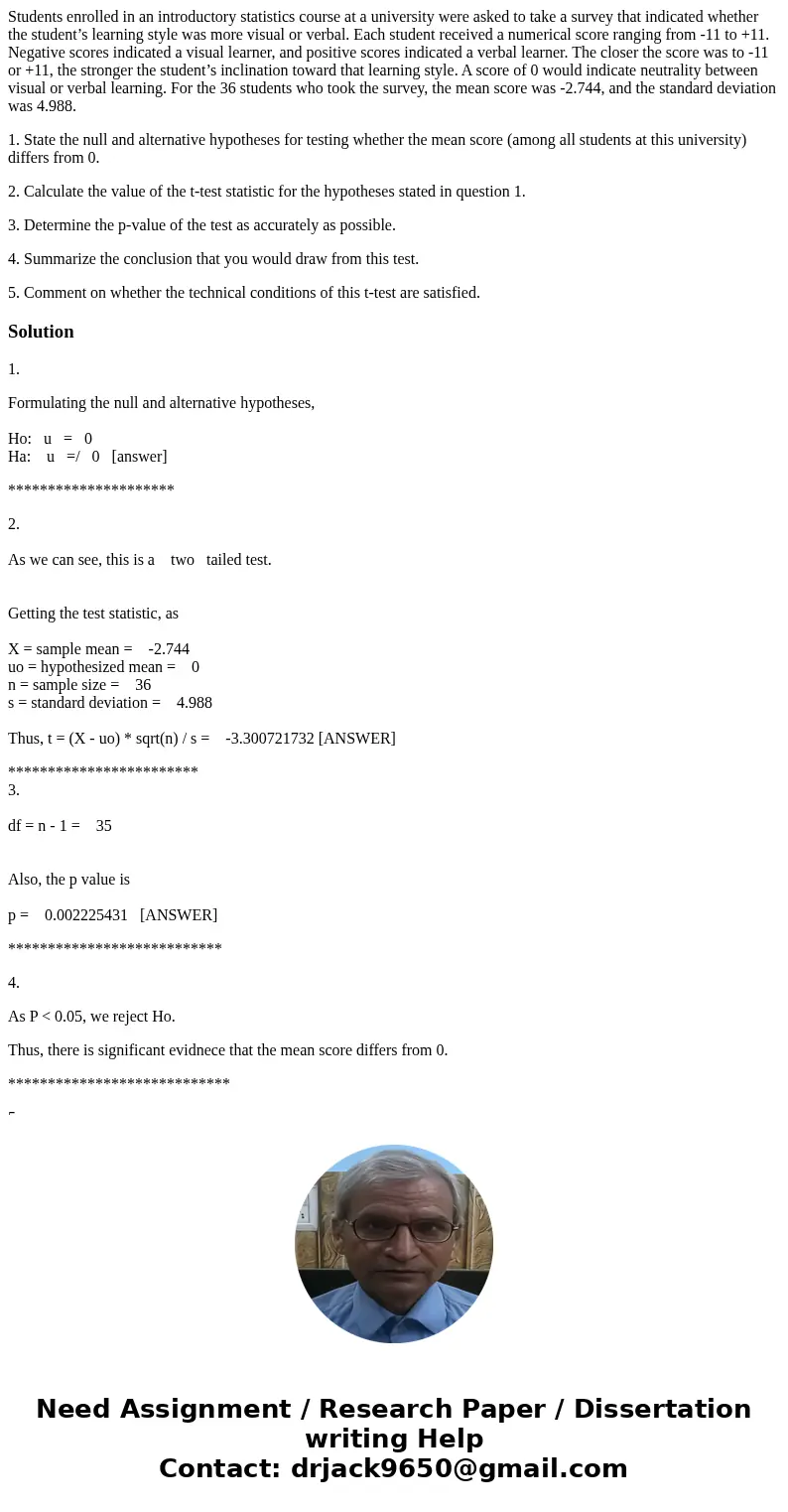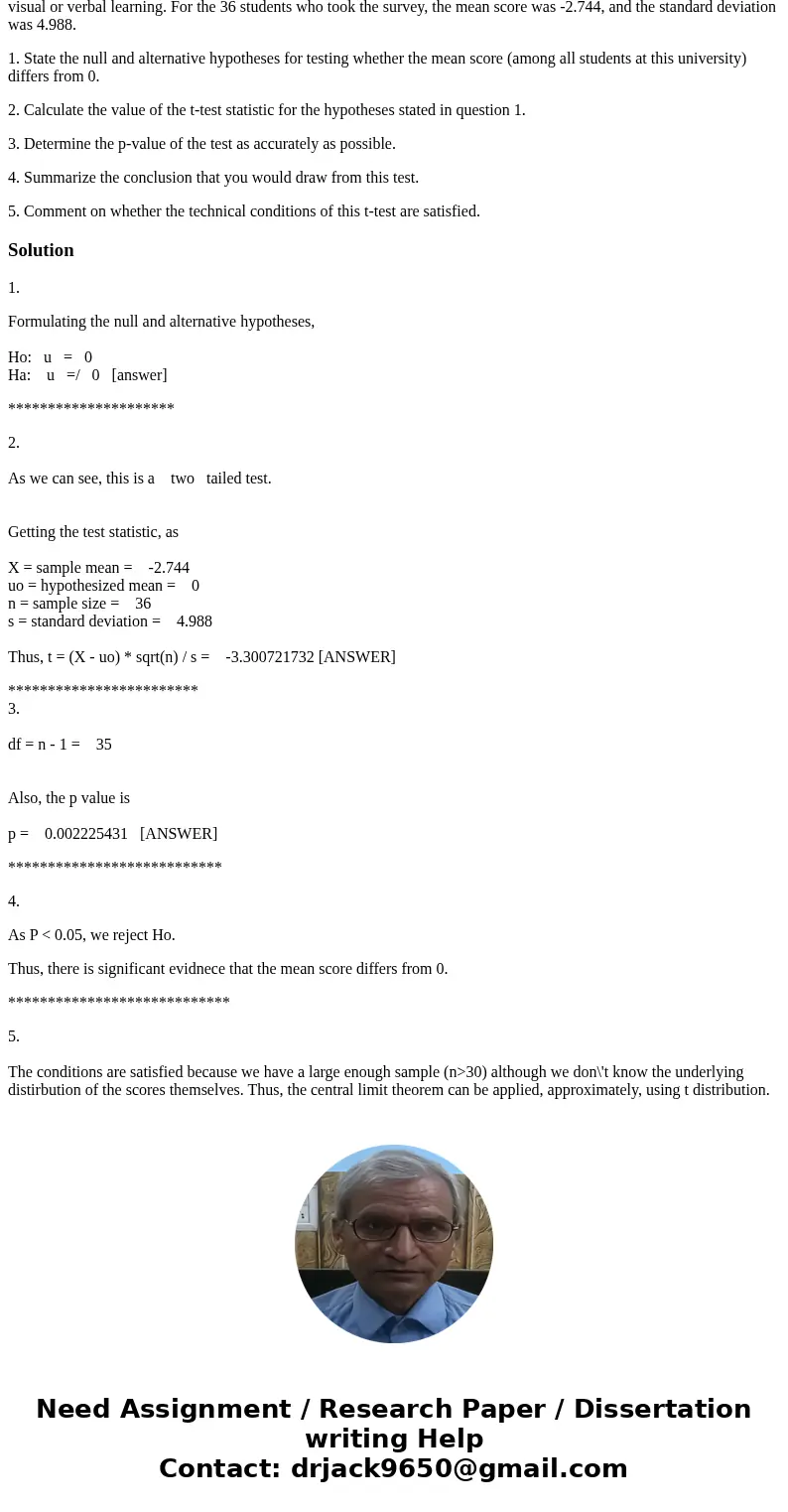Students enrolled in an introductory statistics course at a
Students enrolled in an introductory statistics course at a university were asked to take a survey that indicated whether the student’s learning style was more visual or verbal. Each student received a numerical score ranging from -11 to +11. Negative scores indicated a visual learner, and positive scores indicated a verbal learner. The closer the score was to -11 or +11, the stronger the student’s inclination toward that learning style. A score of 0 would indicate neutrality between visual or verbal learning. For the 36 students who took the survey, the mean score was -2.744, and the standard deviation was 4.988.
1. State the null and alternative hypotheses for testing whether the mean score (among all students at this university) differs from 0.
2. Calculate the value of the t-test statistic for the hypotheses stated in question 1.
3. Determine the p-value of the test as accurately as possible.
4. Summarize the conclusion that you would draw from this test.
5. Comment on whether the technical conditions of this t-test are satisfied.
Solution
1.
Formulating the null and alternative hypotheses,
Ho: u = 0
Ha: u =/ 0 [answer]
*********************
2.
As we can see, this is a two tailed test.
Getting the test statistic, as
X = sample mean = -2.744
uo = hypothesized mean = 0
n = sample size = 36
s = standard deviation = 4.988
Thus, t = (X - uo) * sqrt(n) / s = -3.300721732 [ANSWER]
************************
3.
df = n - 1 = 35
Also, the p value is
p = 0.002225431 [ANSWER]
***************************
4.
As P < 0.05, we reject Ho.
Thus, there is significant evidnece that the mean score differs from 0.
****************************
5.
The conditions are satisfied because we have a large enough sample (n>30) although we don\'t know the underlying distirbution of the scores themselves. Thus, the central limit theorem can be applied, approximately, using t distribution.


 Homework Sourse
Homework Sourse